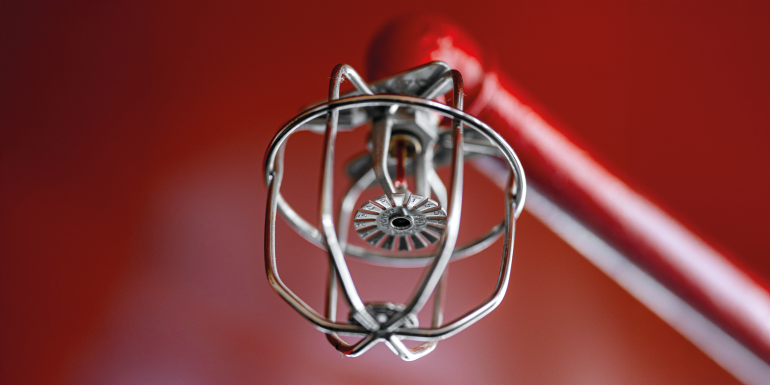Sprinklers: a regulatory success for property protection?

Thomas Roche, Secretary of the Business Sprinkler Alliance, considers whether the UK government’s fire safety actions thus far can be considered a regulatory success for property protection.
A new Fire Safety: Property Protection report, published by the Ministry of Housing, Communities and Local Government (MHCLG), explores the state of property protection in fire safety regulations and examines international approaches to safeguarding buildings from fire damage.
The report forms part of the UK government’s wider response to Dame Judith Hackitt’s Review of Building Regulations and Fire Safety following the Grenfell Tower tragedy. While the core focus of the regulations has always been life safety, a public call for evidence revealed growing concerns that building and property protection were being neglected.
In response, this review was commissioned to explore how fire safety regulations could better reduce property damage. It states that fire safety regulations in England and Wales prioritise life safety, with property protection largely absent from the statutory framework: “Most of the guidelines designed specifically to protect buildings and property from fire are non-statutory in nature.” This means they are voluntary or insurance-driven rather than embedded in legislation. It further concludes that “there is no empirical evidence to indicate the extent to which property protection is achieved through life safety”. This underscores the need for explicit protection measures within regulations.
Sprinklers were consistently identified throughout the review as the most effective active fire protection system. According to the report “sprinklers are especially prominent in literature about property protection and building resilience”, with both academic research and stakeholder input highlighting their unmatched role in containing and extinguishing fires. It also states that “research into the fire resilience of buildings tends to emphasise sprinklers as the primary method of protecting buildings from fire” – a finding that strengthens the Business Sprinkler Alliance’s longstanding advocacy for wider sprinkler adoption.
Stricter fire protection needed
The review highlights that warehouses and industrial facilities in countries such as the US, Sweden and Germany are subject to more rigorous fire protection requirements than in England, noting that “sprinklers are almost always mandatory”.
It also found that in countries such as Scotland and New Zealand, stricter fire protection requirements for schools are in place to “reflect the fact that schools are seen as important service-providing buildings and community resources”. The report also observes that historic buildings, despite their cultural value, are rarely treated differently in regulation to domestic buildings. In contrast, countries such as the US and Germany have developed tailored fire safety guidance for heritage sites that balances protection with preservation.
The review also warns that sustainability and modern methods of construction may compromise fire resilience, particularly in relation to mass timber and modular construction. These methods, it states, have “critical vulnerabilities” including concealed cavities that can accelerate fire spread and the use of combustible materials that are not adequately addressed in current regulations.
In response to the report, the Business Sprinkler Alliance is urging policy-makers to broaden the scope of fire regulations to explicitly include property protection and to consider the wider adoption of automatic sprinklers as a proven, effective measure. Chair Iain Cox says: “This report validates what we’ve been saying for years – that sprinklers are a cornerstone of resilience, and that we must look at the bigger picture and do more to embed property protection in UK fire safety regulation.”
For more, visit business-sprinkler-alliance.org
MHCLG’s Fire Safety: Property Protection report b.link/MHCLG_safety









